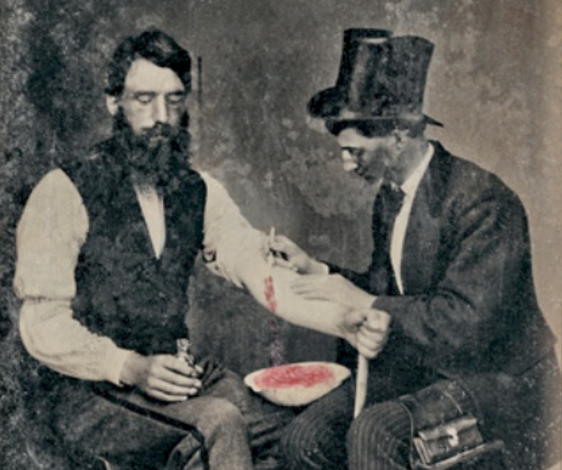The Black Death, a devastating plague that swept through Europe in the 14th century, led to a variety of desperate and often ineffective attempts to cure the disease. With limited understanding of germ theory and disease transmission, people turned to inventive but ultimately failed methods. This article explores three such failed cures: the aromatic cure, bloodletting and toads, and the flagellants, highlighting their historical context and the lessons we can learn from them.
Understanding these failed cures offers insights into the mindset and scientific limitations of the time. It also underscores humanity’s enduring spirit and relentless pursuit of solutions in the face of overwhelming challenges. Let’s delve into these historical remedies to appreciate how far medical science has come and to recognize the timeless human traits of hope and innovation.
The Aromatic Cure: Combating ‘Bad Air’
In medieval times, the prevailing belief was that the plague was caused by miasma, or ‘bad air.’ To combat this, people used anything with a strong, pleasant scent. This included fresh and dried aromatic plants, flowers, wine vinegar, raw garlic, and the fumes of smoldering tar. The iconic beaked masks worn by physicians were filled with herbs like rosemary, lavender, and mint, believed to purify the air and offer protection.
Pomanders, elaborate balls containing potpourri, were used by the upper classes as a defense against the unspecified menace. This belief persisted through multiple plague recurrences, including the Great Plague of London in 1665–1666. However, it wasn’t until 1894 that Alexandre Yersin identified the true cause: the bacterium Yersinia Pestis, transmitted mainly through fleas on rats.
Although fragrant spices might have psychologically helped people cope with the stench of sickness, they provided no actual protection against the disease. This is reminiscent of the early days of COVID-19 when people obsessively used hand sanitizer and Lysol, seeking comfort in familiar but not always effective measures.
Bloodletting and Toads: Balancing the Humors
Bloodletting, a practice dating back to the 1340s, was intensified during the Black Death. Physicians believed that diseases resulted from an imbalance of bodily fluids, or humors. When plague victims showed symptoms like swollen lymph nodes (buboes), bloodletting was performed using leeches, simple blades, or rudimentary suction cups.
Physicians or barber-surgeons would extract the ‘infected’ blood. Another practice involved rubbing living toads onto buboes, with the idea that the toads would suck out the poison. In reality, these treatments worsened patients’ conditions, making them more vulnerable to secondary infections, as the bloodletting tools were rarely sterilized. The toads, of course, offered no benefit.
Bloodletting persisted for many years, even during the Great Plague of London. It only began to fade in the mid-1800s with the advent of germ theory. This practice is similar to modern-day unscientific home remedies, such as placing raw onions on the chest to ‘extract toxins,’ a practice that offers no real medicinal benefit.
The Flagellants: Seeking Divine Forgiveness
During the Black Death (1347-1351), many believed the plague was divine punishment for society’s sins. This belief fueled the rise of flagellants, religious groups who marched in processions, flogging themselves with birch whips to atone for the sins of the world. These public performances attracted large crowds, with flagellants chanting, praying, and inflicting self-harm to appease God and halt the plague’s spread.
The flagellants’ actions, while providing spiritual solace to some, were disastrous for public health. The large gatherings increased the spread of infection, and their self-inflicted wounds often became infected. Initially embraced by the Roman Catholic Church, the flagellants were later excommunicated for spreading heresies. The movement peaked around 1350 and declined as Europe began to recover.
The flagellants’ behavior reflects a human tendency to seek extreme solutions during times of crisis and guilt. This is comparable to modern behaviors like overworking or self-punishment after making a mistake, which, like the flagellants’ actions, are ultimately ineffective in addressing the underlying problem.
Lessons from the Past: Hope and Innovation
The failed attempts to prevent the plague mirror humanity’s spirit and ability to innovate in the face of devastation. People sought any chance to cope, even with minimal probability of success. The use of fragrant pomanders and live toads illustrates these desperate measures, driven by the need to survive during a period when scientific understanding was limited.
While ineffective and sometimes harmful, these methods underscore the determination not to give up hope. These early trials, though small and unrepresentative of modern approaches, paved the way for advancements in disease study, quarantine, public health, and research. The persistence to question, experiment, and refine our understanding has reshaped our ability to combat illness.
At the heart of these efforts lies an enduring thread of hope. Even against invisible enemies, people clung to the belief that solutions were possible, regardless of how irrational their attempts may have seemed. This hope, coupled with the drive to innovate, forms the backbone of our collective journey through history, shaping the foundations of modern medicine and public health. Today, when we see trends in the wellness industry or try home remedies, we are not so different from those who sought cures during the Black Death.
